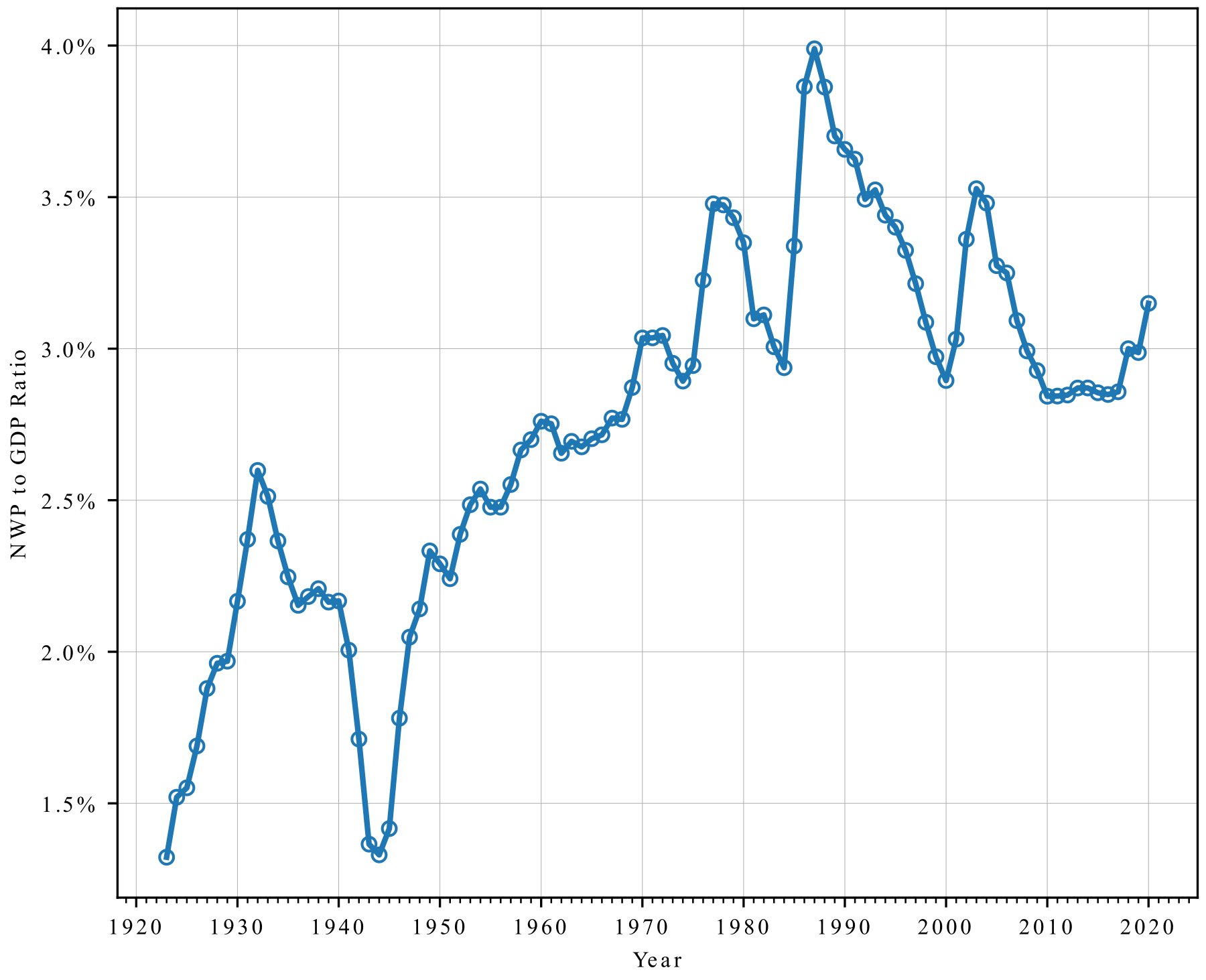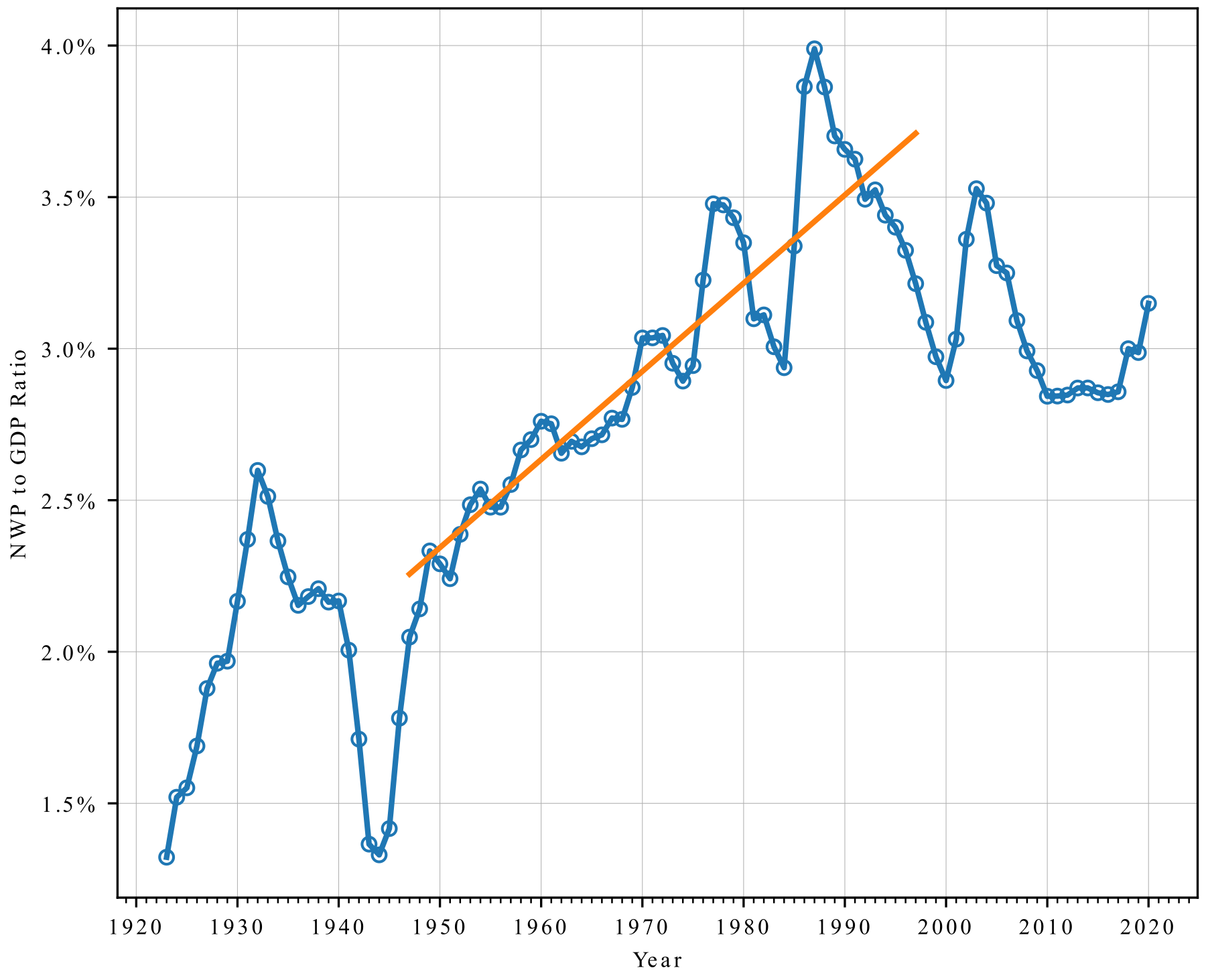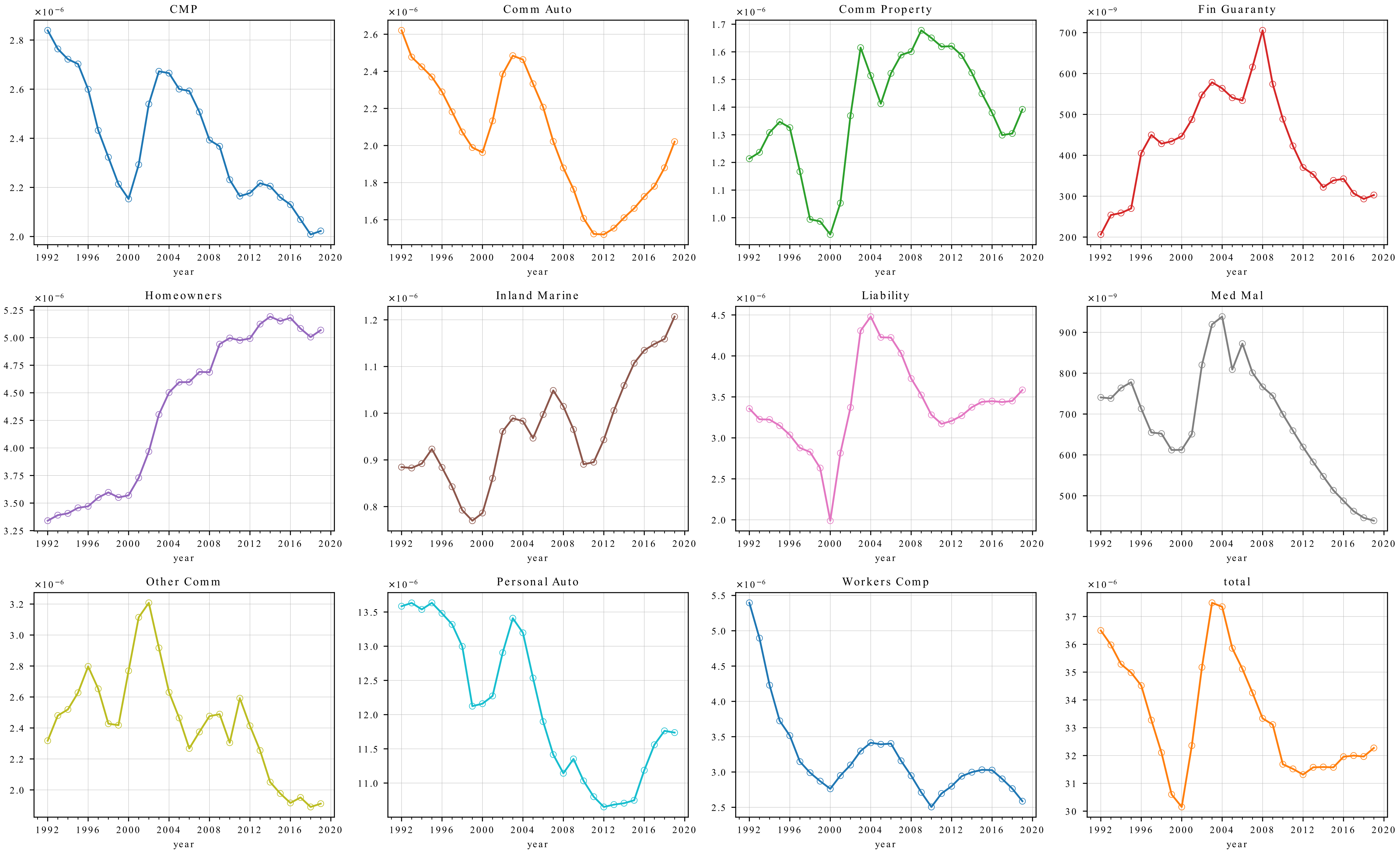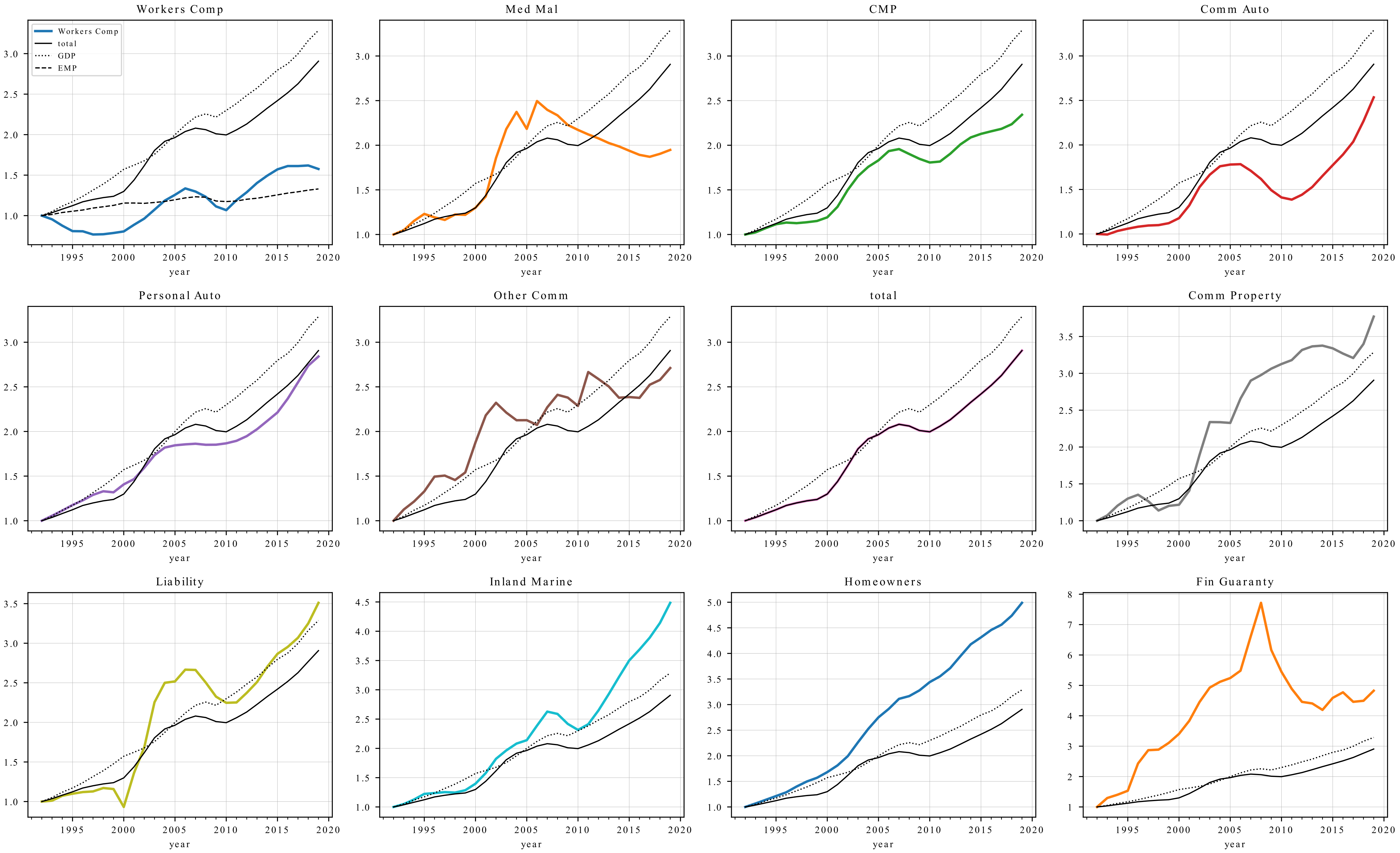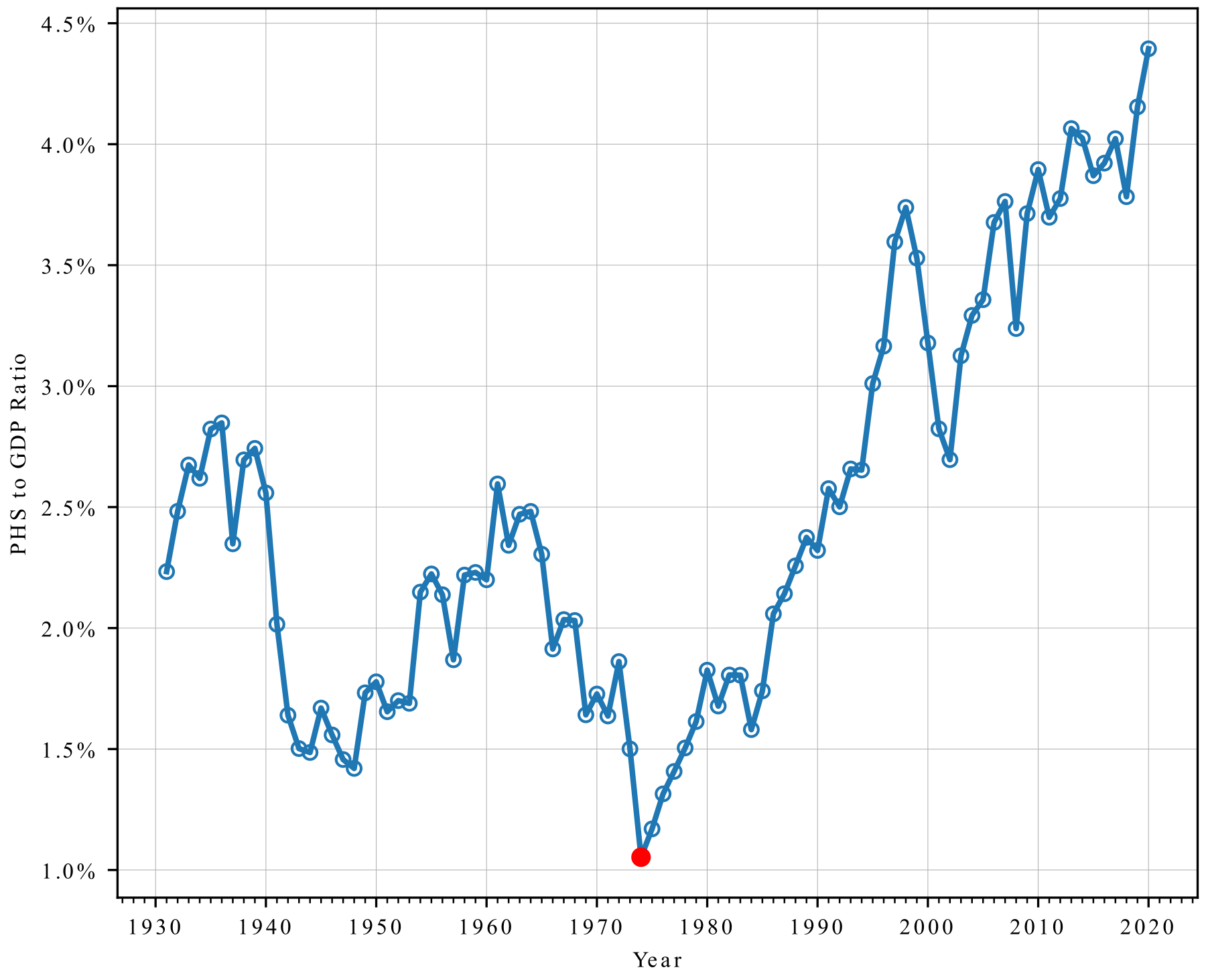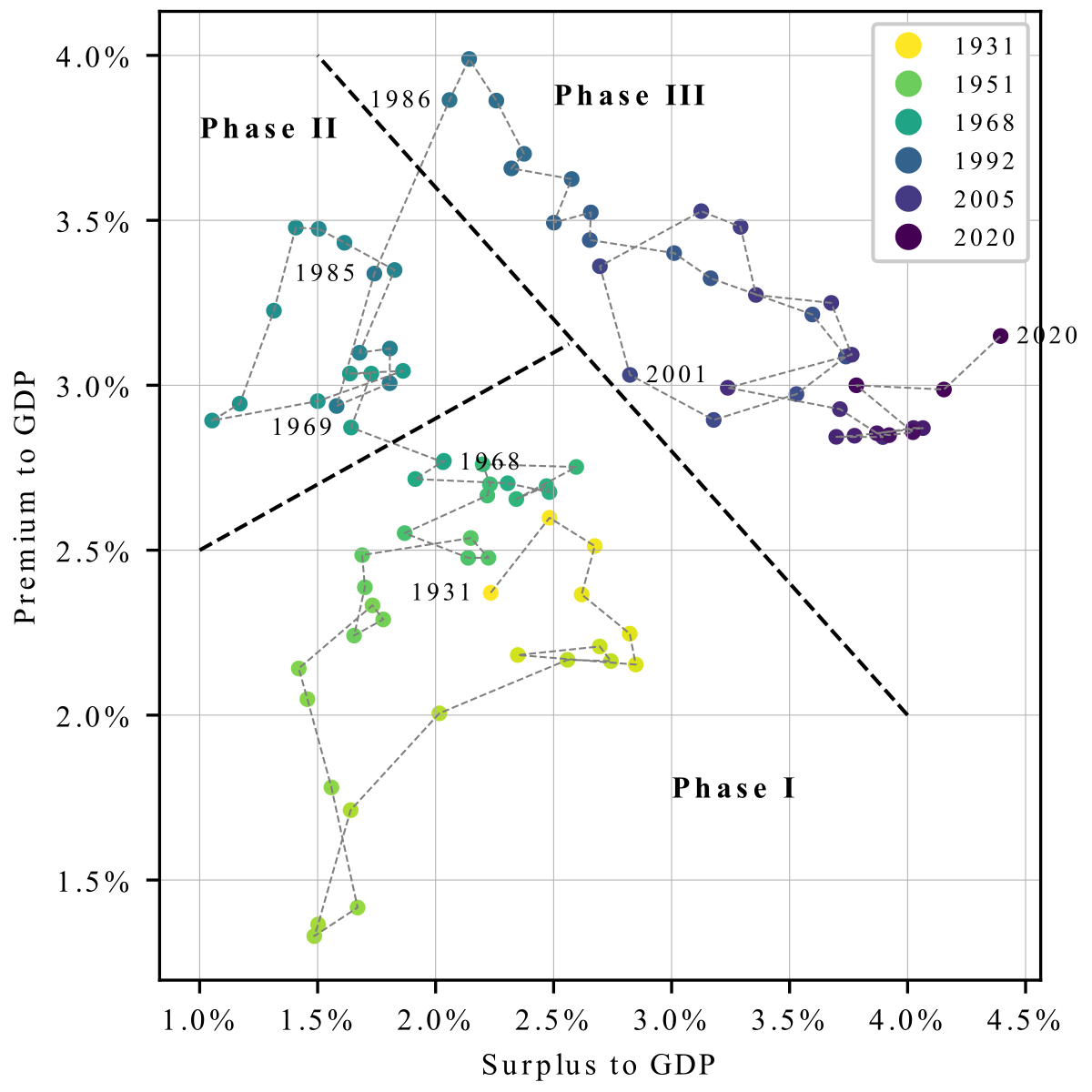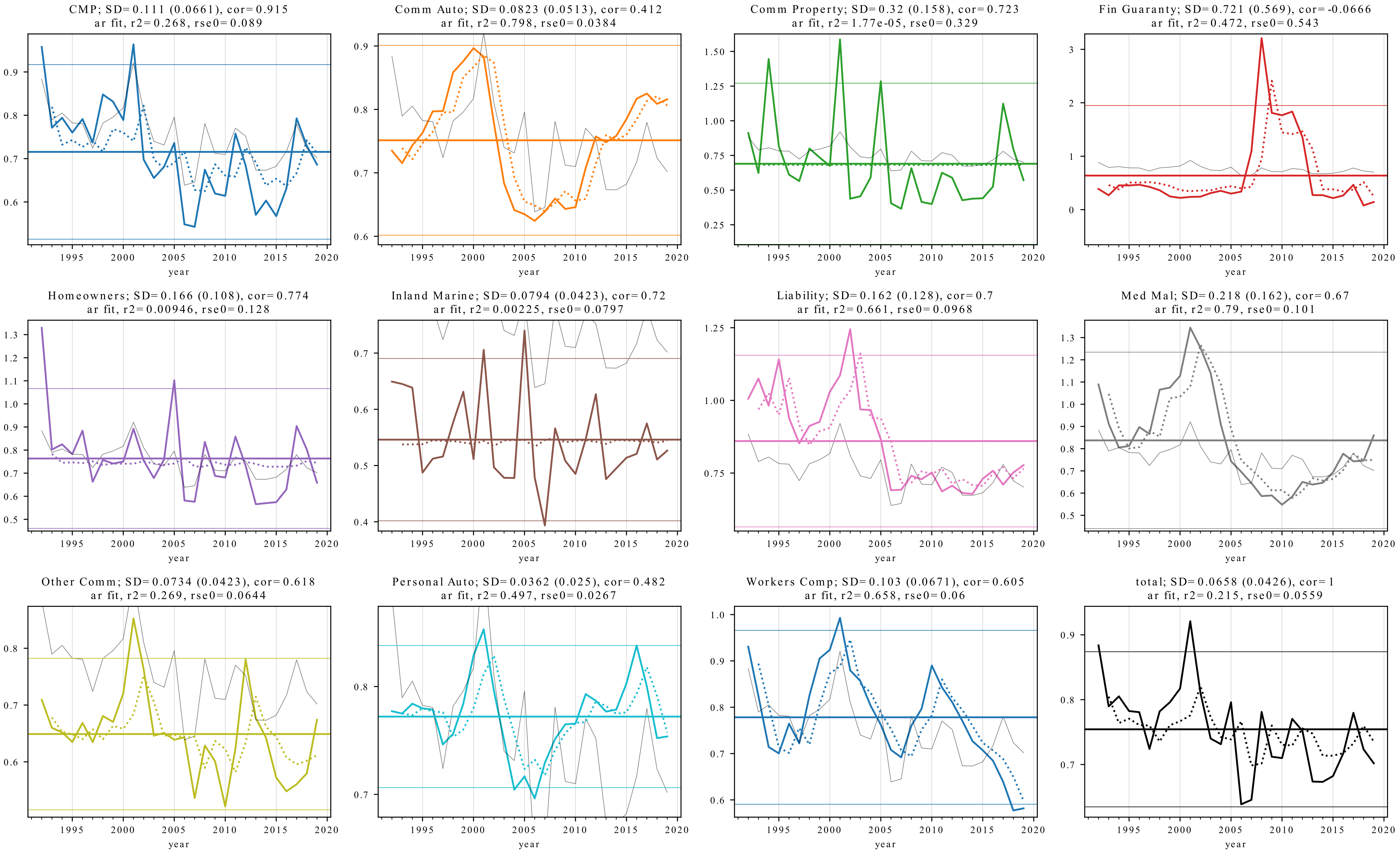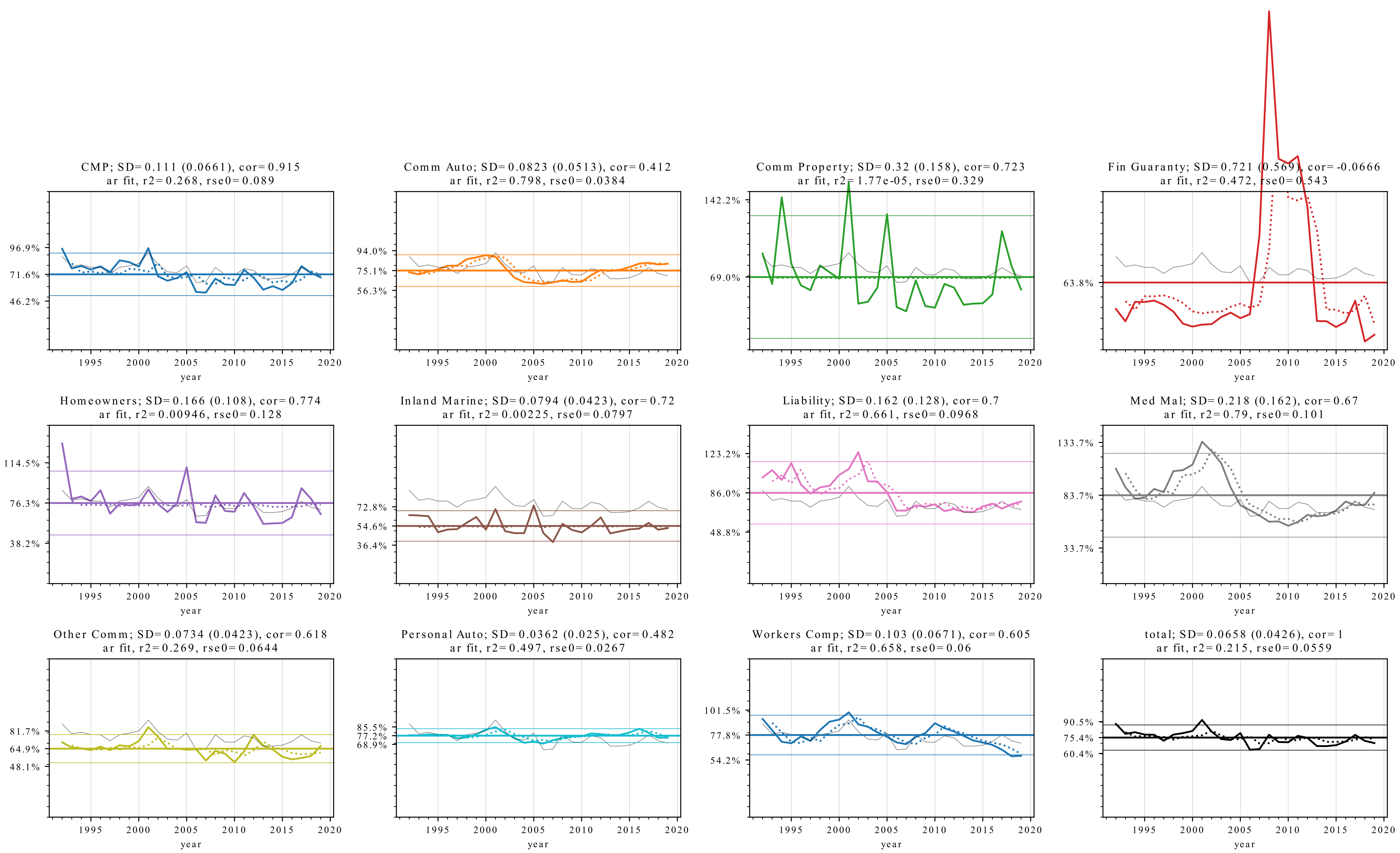When is Premium Riskier Than Loss Slides
presentations
insurance
pricing
PIRC presentation comparing volatility from premium and loss uncertainty.
Author
Stephen J. Mildenhall
Published
2022-03-02
When is Premium Riskier Than Loss?
Premium to GDP Ratio: 1968 Watershed
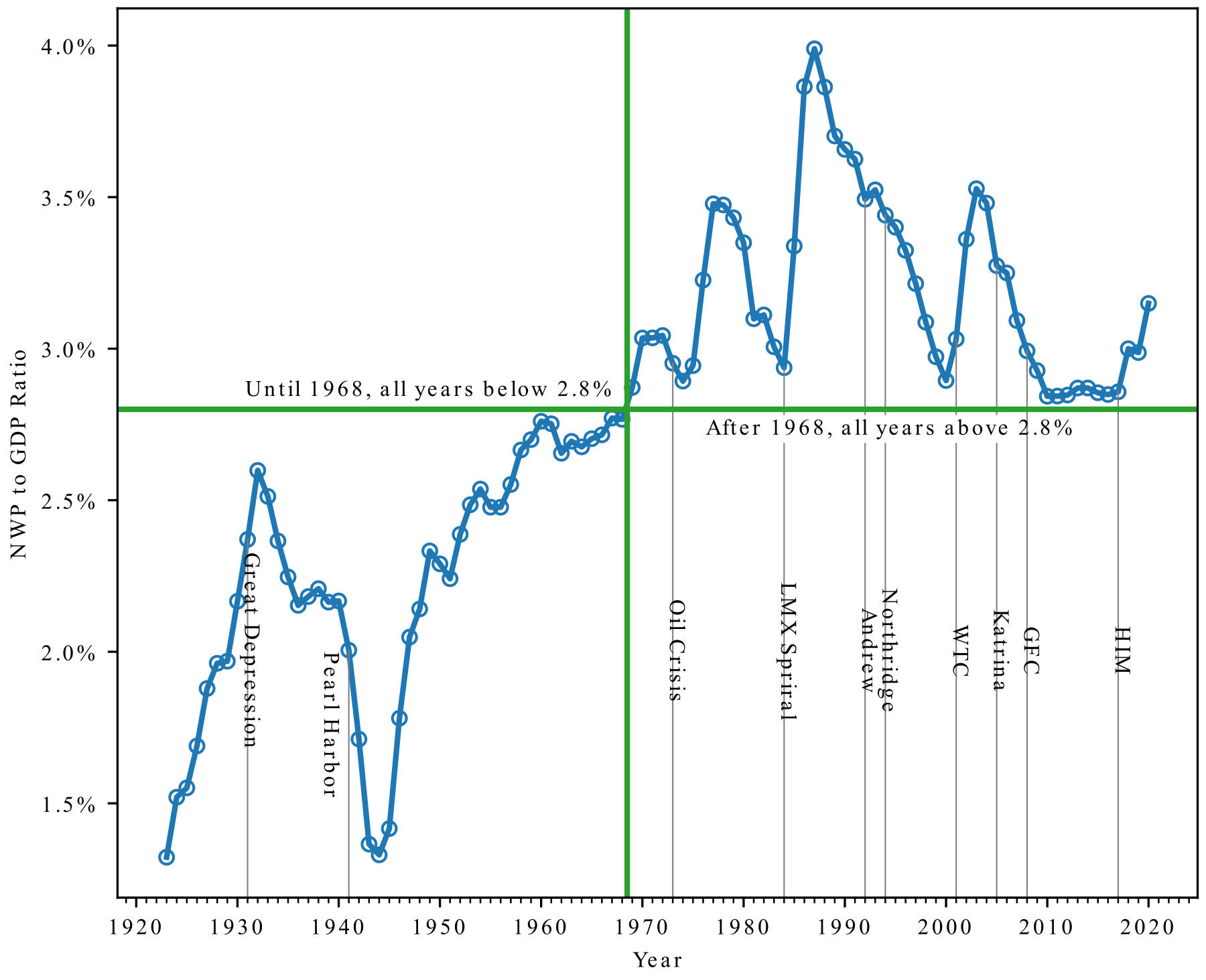
Premium to GDP Ratio
Premium to GDP Ratio: Cyclical Growth Between 1947 and 1997
The Underwriting Cycle Is Driven by Commercial Lines
Calm Surface Masks Inner Turmoil
Premium and GDP Growth Since 1992 (1992=1.0)
Surplus to GDP Ratio, 1931-2020e
Market Dynamics Since 1986 Explained by Prior Year Surplus Levels
:::::: :::
::: :::
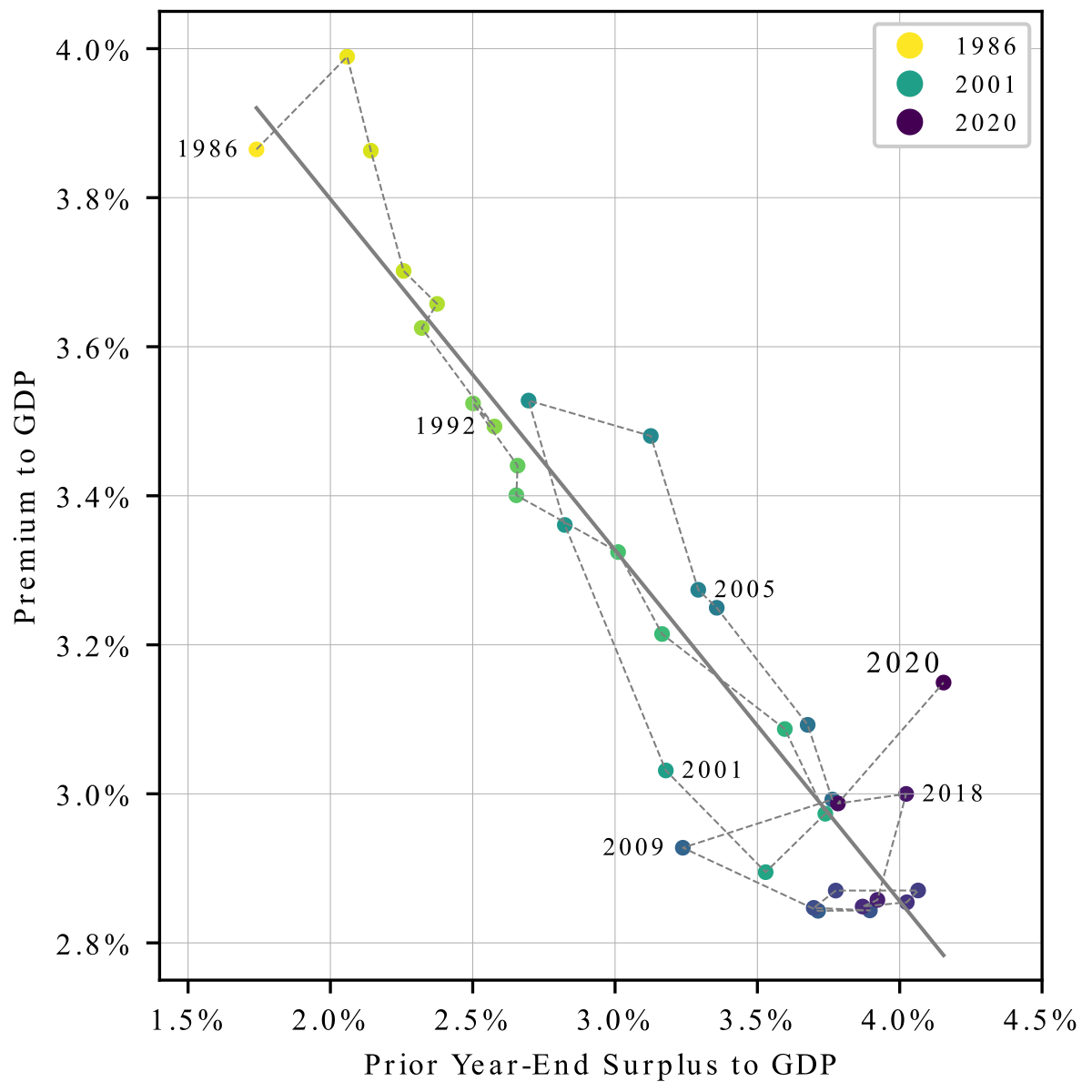
::: ::::::
Direct Loss Ratio Time Series by Major Line
Loss Ratio Time Series by Major Line
Title decoder: CMP; SD=0.111 (0.0661), cor=0.915 ar fit, r2=0.268, rse0=0.089
- Line; standard deviation
- Down-side semi-deviation is shown in parenthsis (explain)
- Correlation of the line with total on the first line
- (second line) shows the \(R^2\) and residual standard error of an autoregressive loss ratio model
Interpretation
- When the
rseis much lower thanSDit suggests the market cycle is predictable - Tends to occur in casualty lines (e.g., commercial auto, medical malpractice, private passenger auto, and workers compensation)
- The cycle for property lines tends to be idiosyncratic, for obvious reasons.
Line Legend
- Thin gray line in each plot shows the
totalloss ratio, for context - The horizontal lines show the mean (thicker) and mean \(\pm \Phi^{-1}(22/23)= \pm1.71\) standard deviations
- If the loss ratios were normally distributed we expect all observations from 22 years (1996-2017) to fall within these tram lines
- They provide a surprisingly good estimate of the range of loss ratio, except for
Financial Lines(which uses a different tick spacing, note).
Direct Loss Ratio Time Series by Major Line, Loss Ratio Scale 0 to 150 Percent
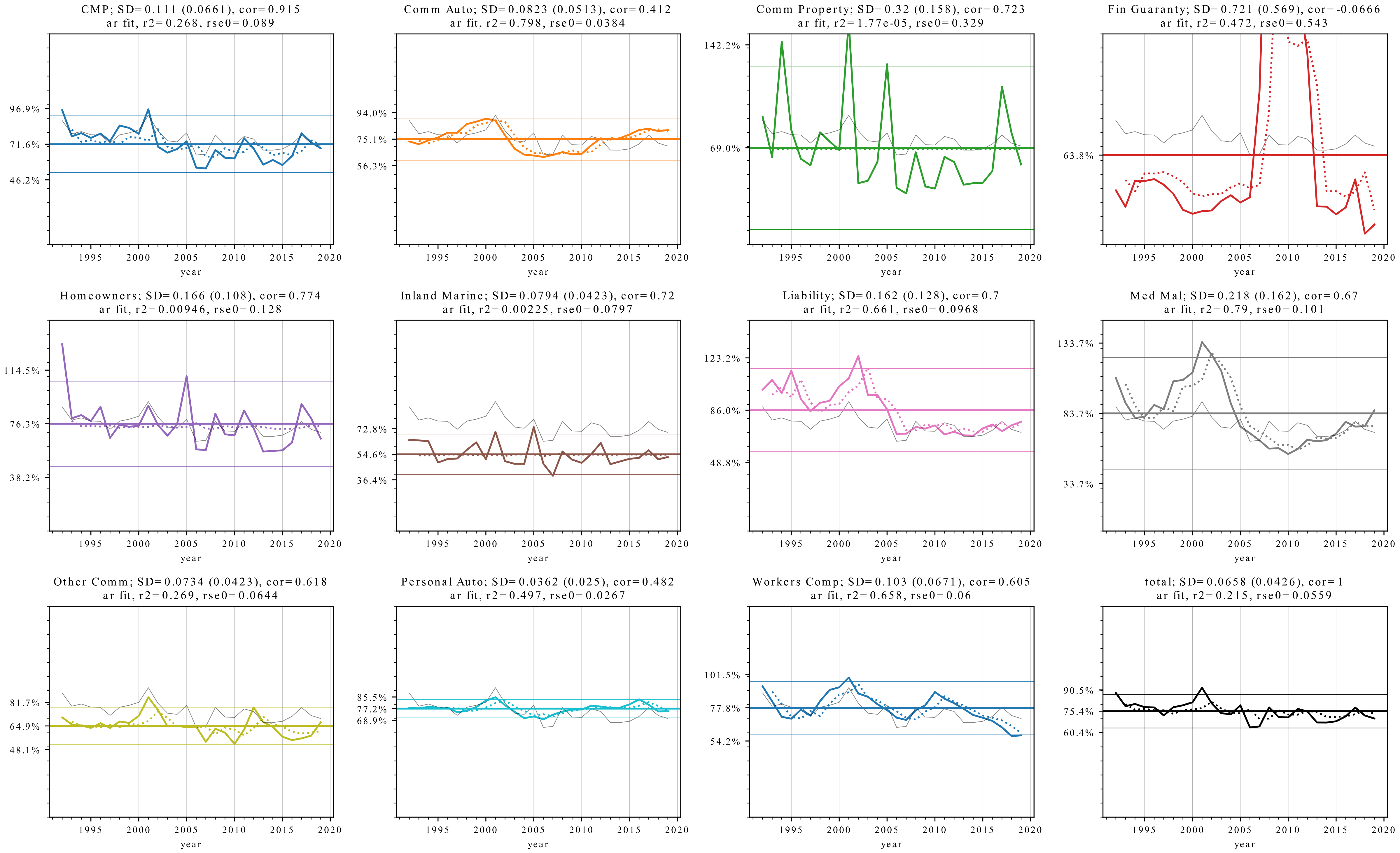
Some Lines Are More Volatile Than Others…
Direct Premium and Loss Dynamics
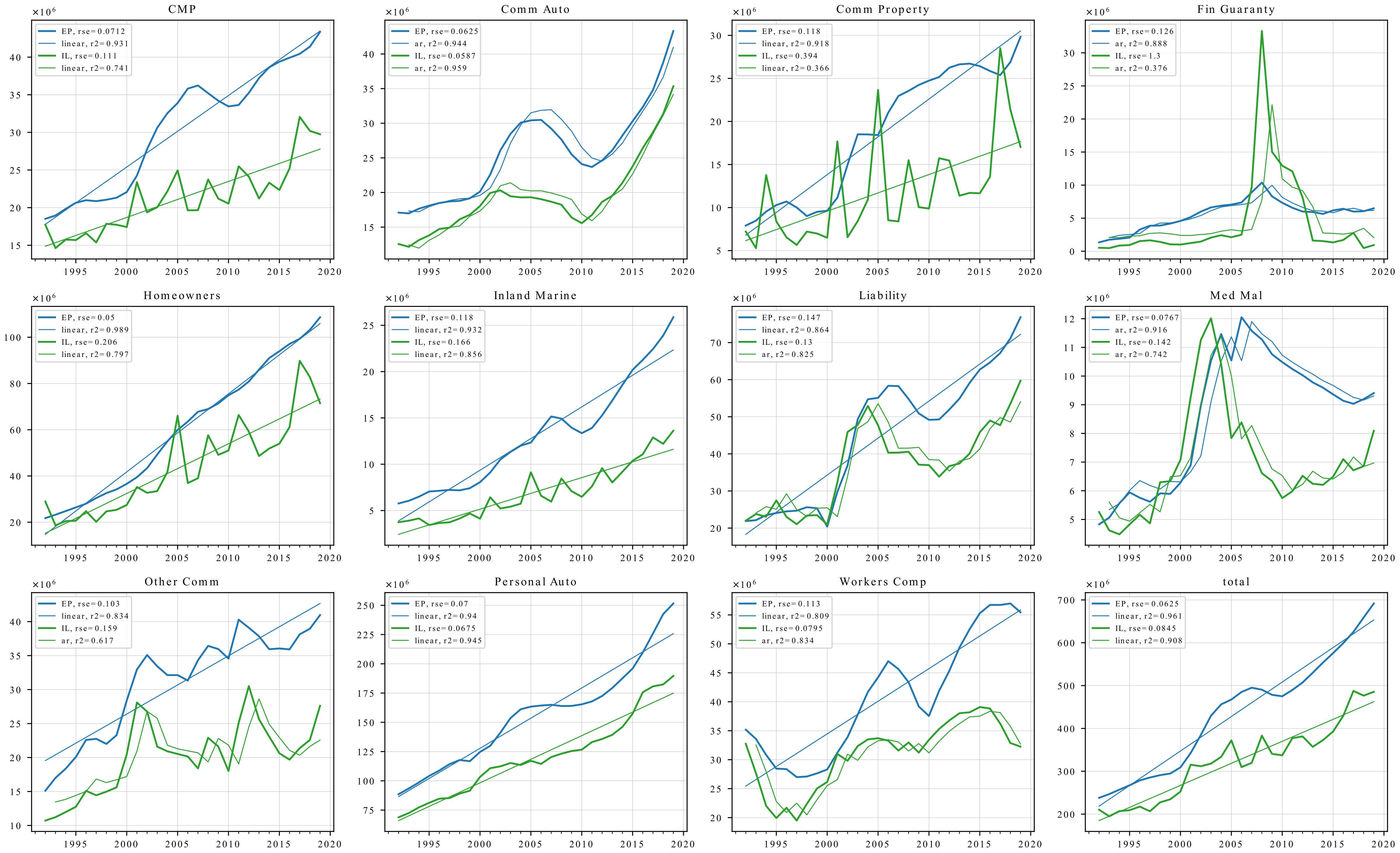
rse is residual standard error without parameter uncertainty, normalized by the mean.
The ratio of US statutory net written premium (NWP) to nominal gross domestic product (GDP) gives a good measure of the insurance market cycle. It measures the penetration of the insurance industry into the economy. 2020 NWP estimated based on Q3 YTD actual and average full year to Q3 YTD;pu actual GDP. GDP and NWP are both are on a nominal basis; inflation cancels in the ratio. If GDP in 2020 had grown inline with 2019 over 2018, then premium to GDP ratio in 2020 would be unchanged. Source: NAIC US Statutory Combined P&C Industry premium and GDP from FRED.
Secular growth from the end of WW2 through 1986 has given way to retrenchment and stabilization. The 1986 watershed saw tax reform, which introduced loss reserve discounting for tax purposes, as well as the claims-made form and absolute pollution exclusion. The period since 2008 is particularly stable.
Premium to GDP for personal lines vs. commerical shows the cycle is more driven by commercial. All y axes have the same range but different locations. Personal lines (blue) shown on commerical plot to compare relative sizes. Commercial lines has been bigger than personal since 2001
Direct premium to GDP by major line shows a wide variety of behaviors. Broadly, property has increased, while liability coverages have decreased.
Lines sorted from slowest to fastest average growth rate, since 1992. The workers compensation plot includes the overall level of employment from the FRED series CE16OV. WC premium has declined as productivity has improved. Broadly, labor inputs have become less important in higher-risk segments of the economy. Commercial auto is particularly interesting.
The surplus to GDP ratio shows that relative surplus levels have steadily increased since their recorded low in 1974 of 1.1% (red dot). YE 2020 surplus estimated at 2 percent above Q3. Last year’s level is the all-time high of 4.4%.
Phase I, 1931-1968: establishment, depression, WW2, and recovery. Phase II, 1969-1985: growth and expansion, industry looking for ways to find coverage. Phase III, 1986-present: retrenchment and responsibility, secular decline in interest rates.
Direct calendar year Loss ratio time series by major line. See gloss below.
Same as the previous plot, but not clipping loss ratios at 150 percent for Commercial Property, Liability and Fin Guaranty.
